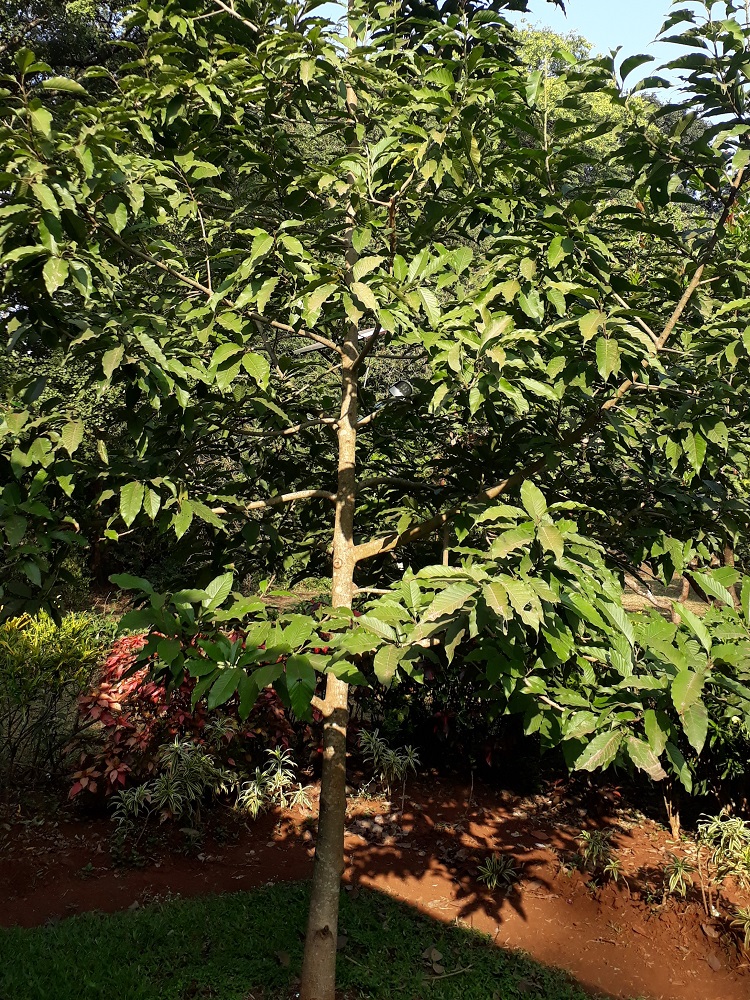Champa - Sonchafa

Michelia champaca
Summary
Scientific Classification
Kingdom: Plantae
Division: Magnoliophyta
Class: Magnolipsida
Order: Magnoliales
Family: Magnoliaceae
Genus: Michelia
Species: M.champaca
Scientific Name: Michelia champacaL.
Common names
English : Champa, Golden Champa.
Hindi: Champa.
Marathi: Sonchafa.
Discription
- Habit and Habitat: Champa is very well known flower native to the Himalayas, and popular for its fragrant flowers. It is a tree up to 50 m or taller, up to 1.9 mTrees, buttressed, up to 30 m tall.
- Distribution: Champa is found in the Himalayas, up to NE India and SE Asia, at altitudes of 600-1300 m. native to the Indomalaya ecozone, consisting of South Asia, Southeast Asia−Indochina, and southern China.It is found in Tropical and subtropical moist broad leaf forests.
- Morphology:
Leaf: : Leaves simple, alternate, spiral; petiole 1-3 cm long, stout and planoconvex in cross section; lamina 9.5-25 x 3.5-9 cm, elliptic-lanceolate, apex acuminate with twisted acumen, base acute to attenuate, margin slightly undulate, glabrous, chartaceous; midrib nearly flat above; secondary nerves 12-16 pairs; tertiary nerves closely and strongly reticulate.
Inflorescence: solitary, axillary.
Flowers: Flowers solitary, axillary, large, yellow, fragrantUsually nine tepals, 3 whorls of 3 each; either all the 3 whorls petalloid or sometimes the outermost of 3 tepals becomes sepaloid than calyx and corolla and described as under.
Androecium: Indefinite, polyandrous, spirally arranged, distinguished into filament, connective and anther lobes, dithecous, basifixed, dehiscence longitudinal, extrorse.
Gynoecium: Polycarpellary, apocarpous; superior; spirally arranged on a cone like and elongated thalamus; each carpel with a swollen ovary, curved style and beaked and simple stigma, unilocular; placentation marginal, many ovules in each carpel.
Fruit: An etaerio of follicles, dark coloured with white specks.
Seeds: Seeds 2-4 per carpel, rugose.
Flowering and Fruiting time: February -June. - Propagation: Through seeds,Grafting,Cuttings.
-
Importance:
a.it is used for worship at temples whether at home or out, and more generally worn in hair by girls and women as a means of beauty ornament as well as a natural perfume.
b.The tree was traditionally used to make fragrant hair and massage oils.
c.wood, which is used in furniture making, construction, and cabinetry.
d.The bark is used as a febrifuge.
e.A decoction of the bark and leaves is given after child birth.
f.The flowers are used to treat leprosy.
g.The leaves are used as a treatment against colic.
h.Soil under tree cover shows an increase in pH, soil organic carbon and available phosphorus. - Location:
 Trees of Empress Botanical Garden - Project supported by
Trees of Empress Botanical Garden - Project supported by